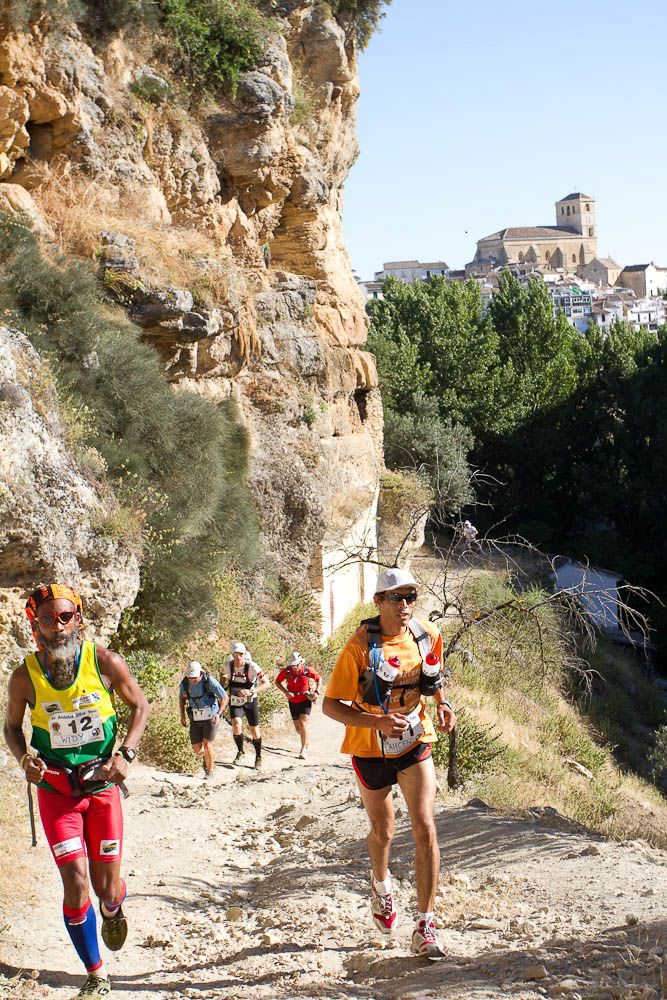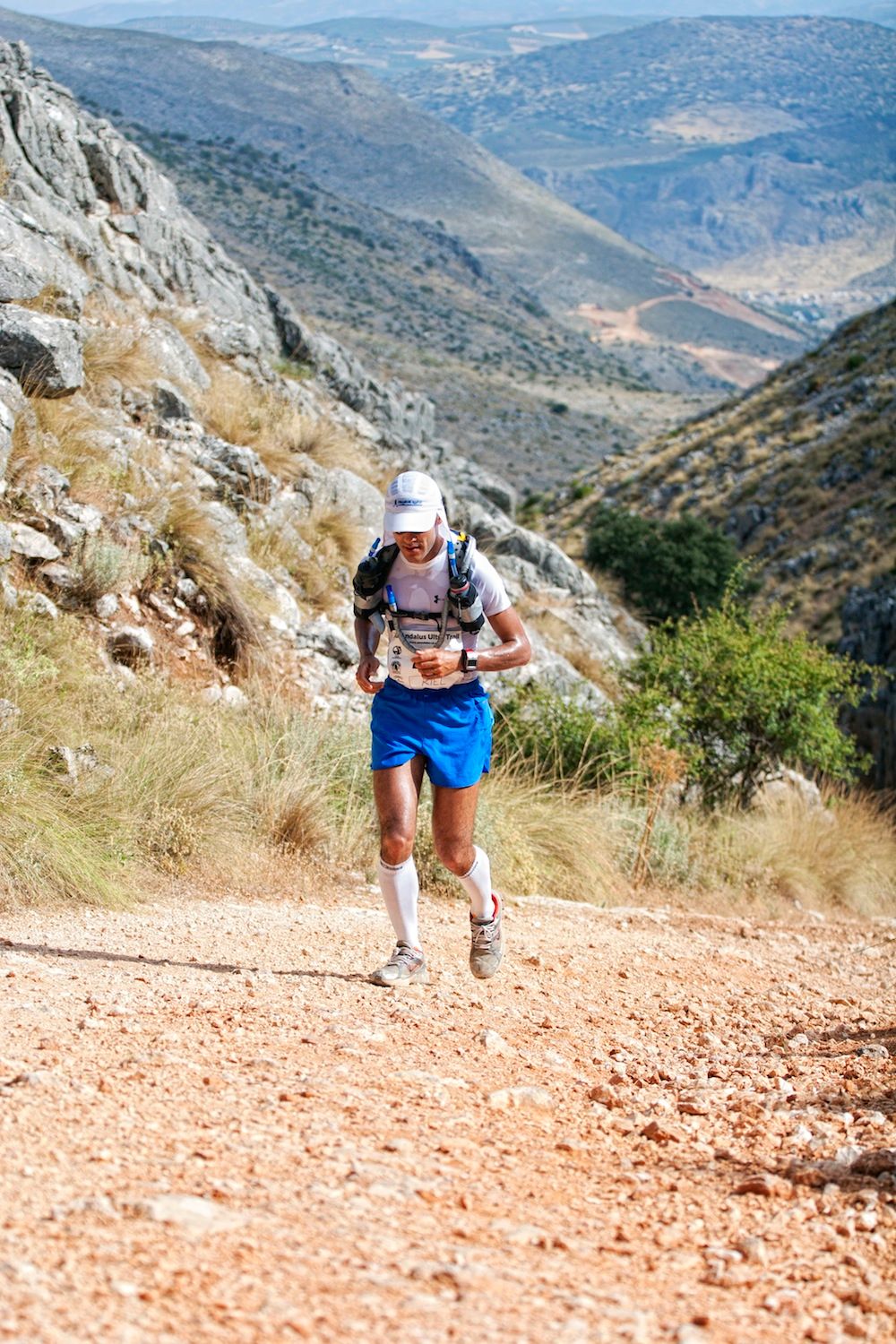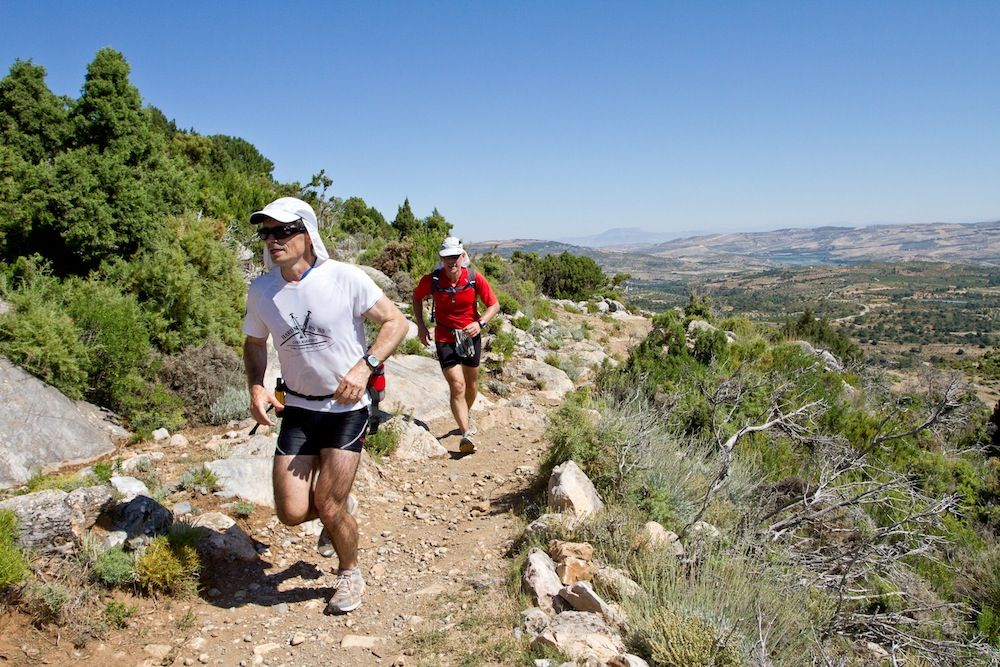§staticmap(13408,5,450,250)Hello, on July 8th 2013, you’ll be organizing the Al Andalus Ultimate Trail. Can you tell us where it is located?
A.A.U.T. runs through a beautiful section of the Granada province in Andalusia, Spain. The race is based in the town of Loja. Loja is located about 1h from Malaga airport and 30 minutes from Granada airport.
How old is the race and why was it created in the first place?
The first race was in 2007 to test out the route. We took a year to make improvements on the event, and in 2009, we did the first official Al Andalus Ultimate Trail. 2013 will be the 5th edition.
The race was created to bring attention to an absolutely beautiful area of southern Spain where the economy is in crisis. The race stimulates local economy and creates sustainable tourism, especially sports related, the most positive kind of tourism.
The runners cross 7 villages over 5 days. It is also an excellent experience for runners making the move into ultra-marathon stage races. It is a runner’s race. You don’t carry a pack when you run other than what you need for that stage, leaving you free to enjoy the beautiful landscapes while pushing yourself in the grueling July sun.
The route is a mix of technical single track, off-road trail, and a bit of tarmac when entering and exiting villages. We are fortunate to have desert, mountain, and forest terrains in the area.
Stage 1 (39km) is the most desert-like; Stage 2 (48km) goes into the mountains of the Sierra Tejeda, Almijara y Alhama natural park; Stage 3 (39km) continues through the park; Stage 4 (67km) is in the park and includes a big lake area and some rural terrain. Stage 5 (37km) cuts back to the start via mountain tracks below the desert plateau.
Prior to the race, we make sure the route is very well-marked with official race markings. We also provide stage maps for each day. There are checkpoints every 10 – 12km, route marshals, and a sports medical team to ensure the safety and security of the competitors.
How many runners do you expect and what type of runners do you plan to attract?
We limit the field to 100. We prefer the more communal, friendly atmosphere that happens with smaller groups. Runners vary from elite professional to people attempting their first stage race. This race is popular because it is a semi-supported race. We see each stage as a separate race. Some novices choose to miss a stage and recover for a day before doing another, while the elite front-of–the-pack are in an all-out race every day for 5 days.
The 10-time winner of the Marathon des Sables, Lahcen Ahansal, won AAUT 2010. He said the running is tougher than the MdS, and since it is not a self-sufficient race, runners can get through this test and enjoy the beauty of the experience at the same time.
There are no other races during the AAUT week, but we begin preparations for our other race, Ultima Frontera, immediately after. This is a companion race in October that many AAUT runners also do – 55km, 83km, and 166km distance options in one stage.
AAUT offers 3 UTMB points. Ultima Frontera offers 2 points for the 83km and 4 points for the 166km races.
At that time of the year, what kind of weather can we expect?
The race is in July, which is very hot, sunny, and dry. Temperatures average 35°C-40°C during the day, and, like the desert, it can be cool at night. You can bring a 2- season sleeping bag to go in your race kit bag, which is transported ahead to campsites built daily. You can also specify a single tent for yourself for a small fee, as many prefer to sleep alone or outside when it is hot.
Have you planned festivities around the marathon?
There are daily stage prizes that feature local, artisanal goods. We provide a traditional paella party at the Stage 3 campsite and a pool party after Stage 4. We eat in the race stage finish towns to support the local businesses. We provide boiling water so runners can prepare dehydrated meals to eat as soon as they finish, they then get more food later in the evening in the villages. This is why this race is seen as a very good example of sports tourism. There is also a gala dinner on the final night with prize presentations and live, local music.
The race finished, what advice would you give a runner who has never been to Loja before? A good restaurant, a fancy sightseeing?
Although the race finishes at the race hotel/headquarters where we have the gala dinner and prizes, many runners stay on and do tours around Loja and bigger cities like Granada, Cordoba, Sevilla, and Malaga. We are 40 minutes from the beach coastline of Malaga province. The town of Alhama de Granada has Arab baths, an amazing gorge to hike, and delicious tapas.
One thing that makes AAUT different is we welcome friends and family supporters and will organize accommodations for them to follow the race. Many end up volunteering, sleeping on the campsite, following on bicycles, and staying in local spa hotels. We can help with the logistics for this. Loja, like the majority of towns in this area has very good bars and restaurants, historical sites and good shops.
In a single sentence, what would you tell the readers of ahotu Marathons to make them register for the Al Andalus Ultimate Trail?
The Al Andalus Ultimate Trail is one of the toughest, most satisfying international stage races, the best value, and (from what people tell us) a most welcoming and supportive race experience. We quickly establish a sense of community. No one gets lost in the crowd, and there is no pressure to socialize. The balance makes it memorable for everyone. 80% of our current entries for 2013 have participated in previous editions.
Al Andalus Ultimate Trail is Paul Bateson, Eric Maroldo, Michelle Cutler, and Barbara Price. Bateson originally designed the event based on his experience as a road cyclist. He has been racing for over 40 years, he is 90% deaf, and hopes to inspire people, handicapped or not, to try new things. Paul just won the overall road series for 2012 as well as set a record for (over 60) for the 50km uphill-only Pico Veleta race, 5h 8mn and 35th overall from 500. He and Maroldo race and train in this province throughout the year.


